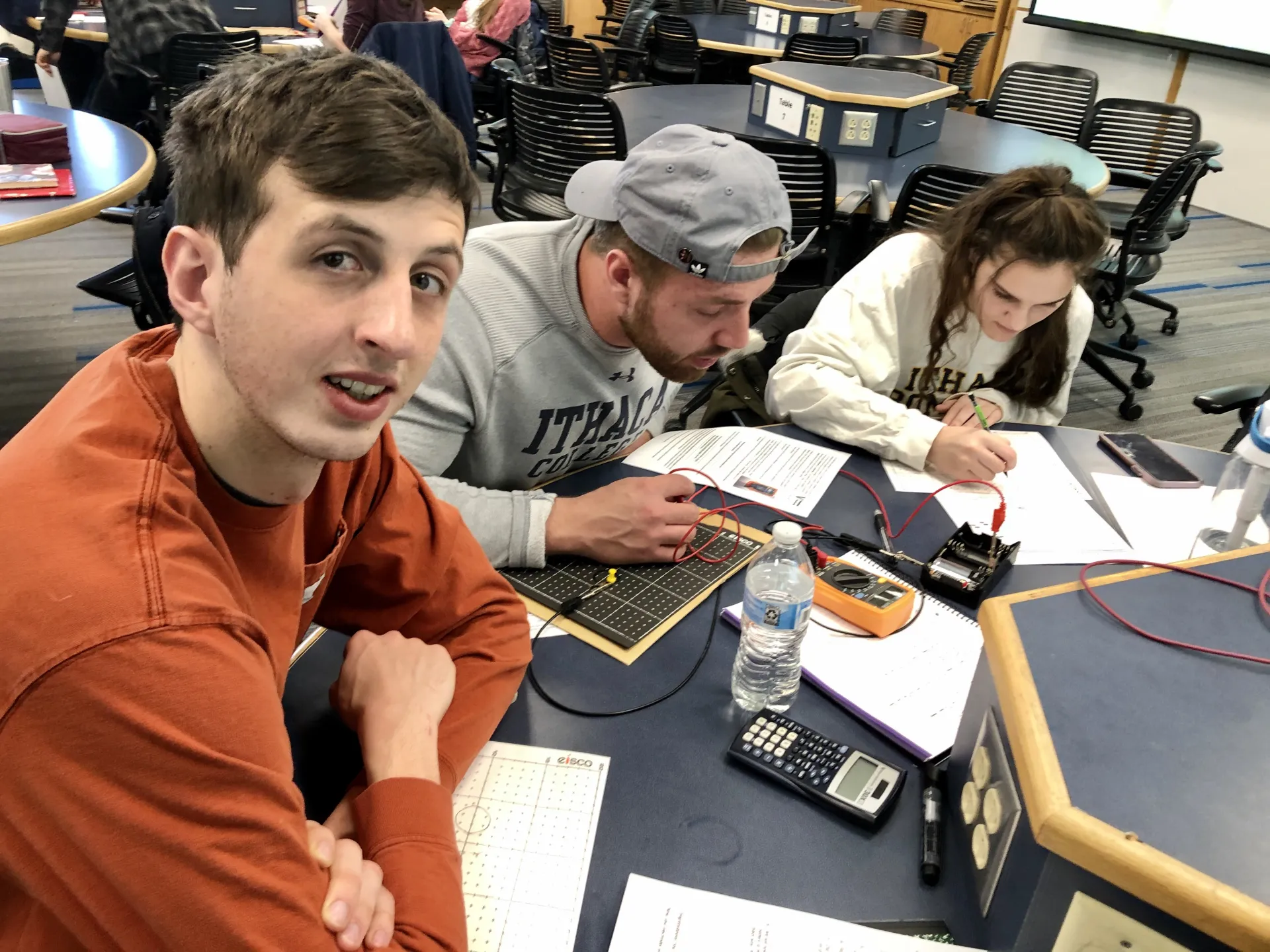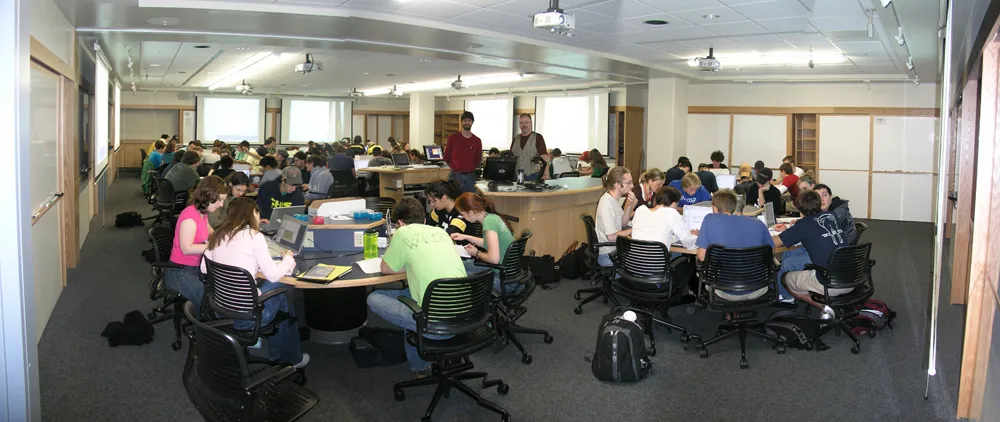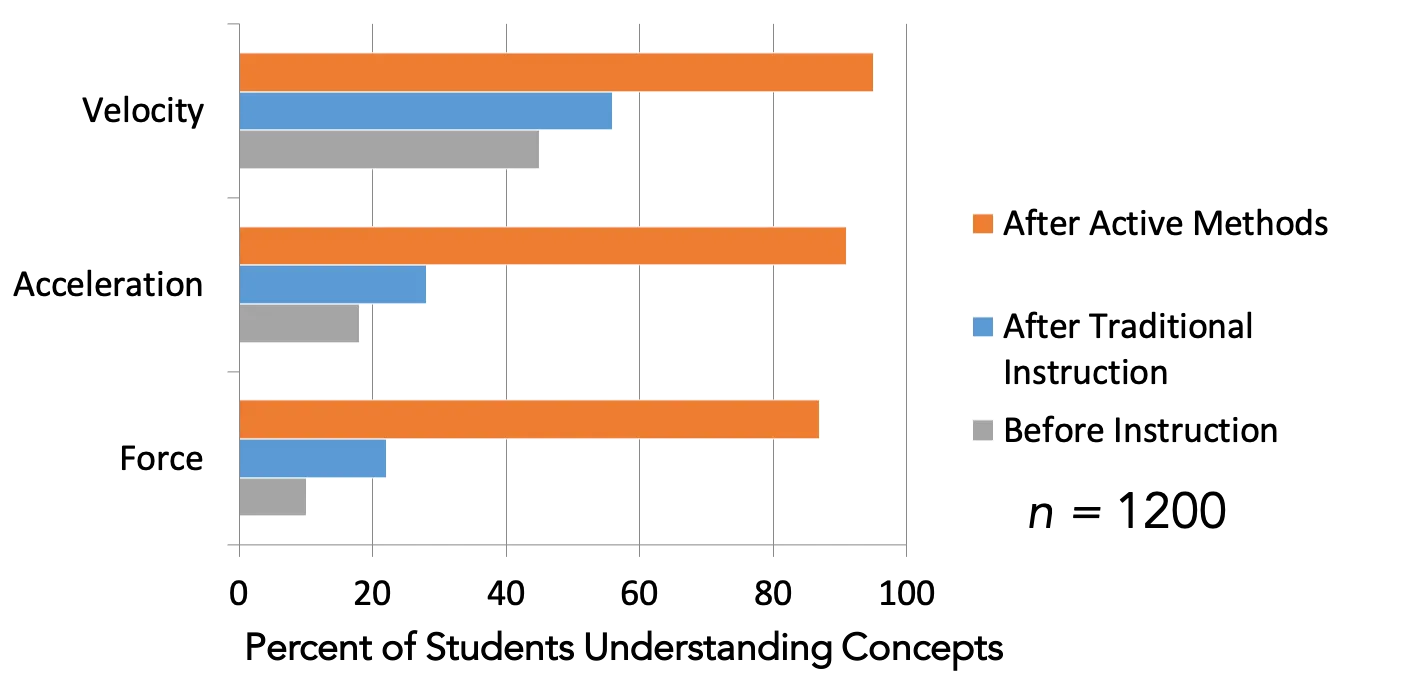Physics education research has repeatedly proven the effectiveness of a "flipped classroom" environment, which centers on student-student interactions. The classrooms allow you to tackle tough problems with others in class so that you are more prepared to tackle similar problems on homework and tests.
The Ithaca College Department of Physics & Astronomy were early leaders in the design and creation of a Performance-Based Physics Lab. Our PBP lab was developed in collaboration with Physics Education Researcher and active learning pioneer, Robert Beichner (North Carolina State University) beginning in 2005. In the years since, our PBP Lab has been significantly updated and remains a state-of-the-art space for active learning and collaboration.


